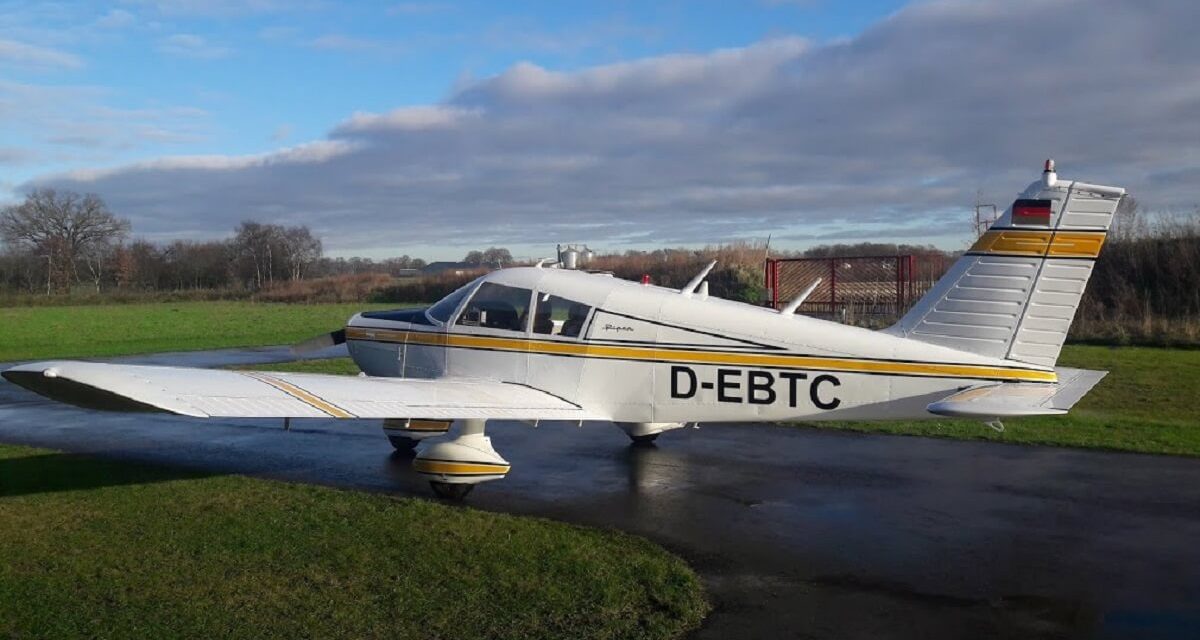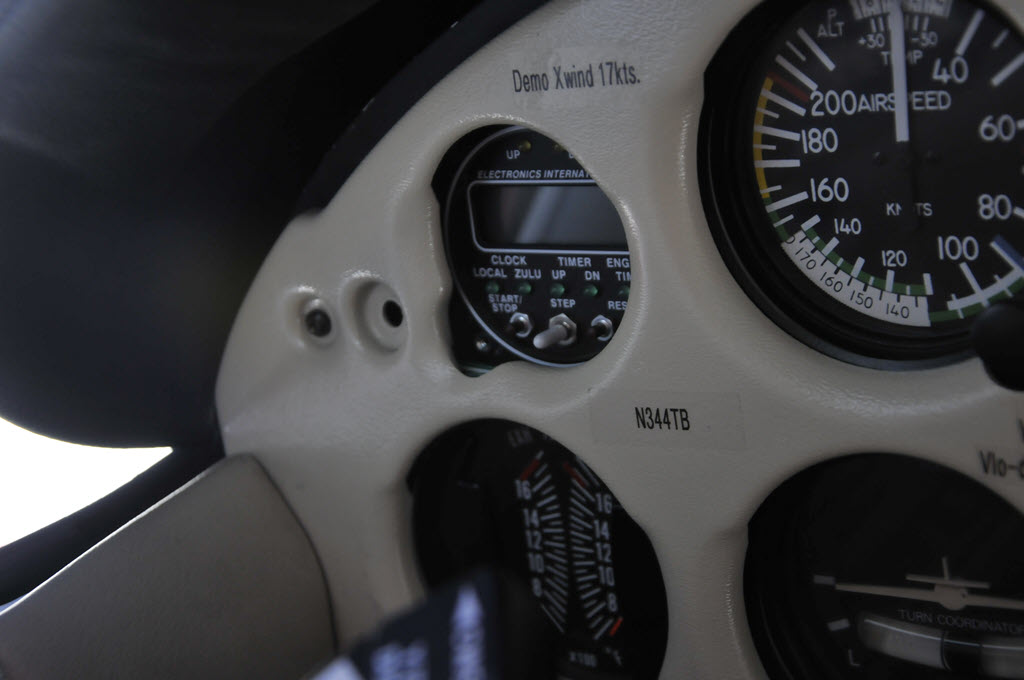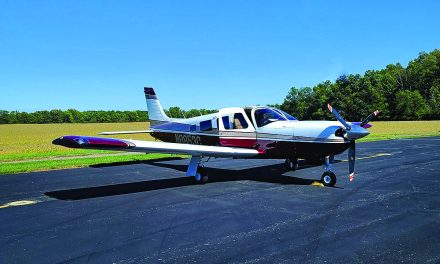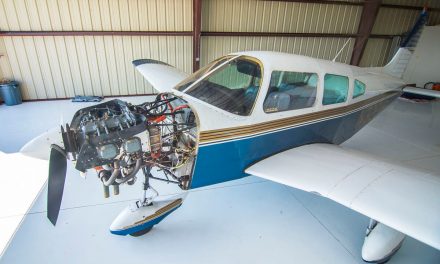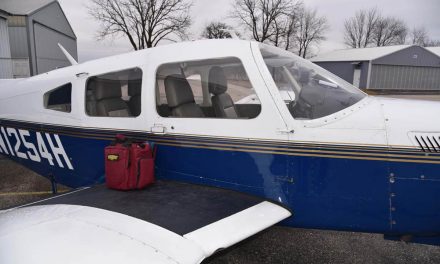By Sebastian Ruffer
I am an air traffic controller in Germany and I started flying in 1991 on gliders. When I got my private pilot license in 1997, I was a member of a flying club that owned an Arrow II and a Turbo Arrow III. Since then I always wanted to own a PA-28. A few years later, life got in the way with other priorities and I stopped flying from 2007 to 2014. Soon after I got my license back, I was looking for a PA-28 again. While I was looking for all types of PA-28s my budget was limited and so I finally made a trip from Giessen, which is near Frankfurt, Germany, to Muehldorf (near Munich) in a rental C-42 microlight to see one particular PA- 28. It was owned by two gentlemen in their late 60s who decided to sell it because they didn’t fly enough anymore. The plane was in decent shape considering its age and the price was fair. I asked them to give me 24 hours to make my decision, but on the flight back home, when my back started aching due to the uncomfortable seats in the C-42, I made my decision.
A few weeks later, on April 27, 2015, I went back to pick up my new plane. D-EBTC is a Cherokee 140B, serial No. 25392, which first flew in January 1969. Then it was transferred to Switzerland in a container and then flew on its own wings to Germany where it was handed over to its first owner in June 1969. It was part of a rental and school fleet and flew 1,000 of its current 4,000 hours in the first 2 years. When you look through the logbooks you will see that it traveled almost all of central and southern Europe and a little bit of the north. Once it was even fully IFR certified. The original documentation, flight logs, technical logs, the original POH, and even the warranty card are still there.
Planes need names and on the way to its new home, I decided to call him Mr. Piper.
Soon I started to upgrade Mr. Piper’s interior. The original 46-year-old carpet looked and smelled its age so it was the first thing to go. I didn’t like the brown, so I went for a more modern dark gray together with light gray leather for the seats and side walls. After that I flew to Gryttjom, Sweden (north of Stockholm), which was my first long journey with Mr. Piper. I flew 7.5 hours in a day and crossed the open water of the Baltic Sea without troubles. After a week of skydiving there with some old friends, I flew back and talked to the avionics shop. As you see in the pictures the original avionics were old but working, but I had to upgrade at least one of the radios to 8.33, which then became a requirement in Europe. At the same time, I got a traffic monitor installed and a Garmin Aera 795. All that was done with only VFR flying in mind and it works pretty well so far. One day I flew to Kassel, where Piper Germany is located. I had a little crack in the spinner and needed a new one. So, I went in and showed them my original warranty card. Unfortunately, it didn’t work but it was fun anyway.
In 2016 I had a big personal change when I moved 500 km north to Bremen where I became a supervisor on the tower. Mr. Piper found its new home on one of the smaller airfields about 20 minutes away by car. By that time I had started thinking about getting a new paint job for Mr. Piper as its old paint was developing cracks and pits and you could see the bare metal at some points. Living close to the sea generally means more corrosion so this was a no-brainer for me. On the other hand, the original plan was to keep Mr. Piper for maybe 3 years and then move on to something bigger and faster — maybe an Arrow or a Bonanza. I kept flying for the 2016 season, traveled all the German islands and Sweden again. Also in 2016, I met the love of my life, my wife Christiane, who instantly shared my passion for flying and accompanied me on most of my trips. One weekend we decided to fly to Baltrum, which is the smallest of the Frisian Islands and our favorite. There isn’t too much air traffic as the runway is only 1,180 feet long and has a 3,000-pound limit on the surface. That was the point when I got doubtful of any other planes as most of them are too heavy, can’t handle the short runway, or both. So, I made an appointment for a new paint job for November 2017. I saw many nice paintjobs on Cherokees but soon we agreed that we wanted to keep the classic paint scheme as we both liked it a lot. The only details that are not original are the triangle between the rear window (which was there when I bought it) and the stripes on the wings and ailerons. I saw those stripes on another Cherokee 140 and liked them, so they were added.
2017 started with the replacement of the original exhaust by a Powerflow, which I would always recommend when your original exhaust is broken. At the same time, I wanted to get the prop overhauled. As it was out of spec, I had to buy a new one. In June 2017 we made a trip to Cornwall and the Isles of Scilly, which have an absolutely stunning landscape. We enjoyed it for about a week and when we flew home, we had the wind in our favor. We traveled all the way from St. Mary’s to Bremen, 611 nm, nonstop in 5 hours and 12 minutes and landed with a 60-minute reserve. That was the longest flight I ever did in Mr. Piper and I enjoyed every second. Only during the final 15 minutes I wished I had a toilet onboard. The paintjob was done as ordered in November and it is beautiful. Mr. Piper now looks vintage cool from the outside and kinda modern from the inside.
In 2018, Chris and I got married and, of course, Mr. Piper was in the wedding pics and the wedding journey. It brought us safely over the Alps to Venice, Italy, where we landed on a small general aviation airfield south of the city. We took the vaporetto (water bus) to get to our hotel and enjoyed our honeymoon. Second honeymoon was EAA AirVenture Oshkosh 2019. After we made the way back home bad luck struck us hard when the engine failed its SB505B crankshaft inspection. The total for an engine overhaul with a new crankshaft and some other associated work was estimated to be 40,000 euros (about $43,000). We were discussing what the best option might be — sell the plane as it is and get another one or get it fixed. We both like Mr. Piper a lot and consider it (almost) to be a family member so we agreed pretty fast to get it fixed, no matter what it takes. While the old engine was essentially scrap, we decided to buy another one (used) and get that one overhauled. We got a Lycoming O-320-D3G, which added another 10 hp. That proved to be a good choice when the time comes that I need it. Due to some bad circumstances, mostly bad communication and work carried out incorrectly by the shop, it took us 10 months to get Mr. Piper back in the air. In the process we changed the maintenance shop and found one that I would say is a jewel among them. I am super happy with Flugwerft Hangar 1 at our new home base. These guys are real pros and they rock every time.
On April 30, 2019, the new engine had its maiden flight and has been running absolutely trouble free since then. Cruise is 112 knots at 75% with a fuel burn of 8.2 gph. In 2019 we flew about 60 hours including a short trip to Denmark, several trips to visit family and friends, and, of course, the islands. Late in 2019 I started my IFR training. As Mr. Piper so far is VFR only, I am now planning to upgrade the panel to meet European IFR standards. The gyros will be replaced with the new Garmin GI 275, the Aera 795, and the GTX 328 will be replaced by a GNX 375, the nav/comm and audio panel will be Trig Avionics, and all that will be complimented by a GFC 500 autopilot. As there is some money involved to get that gone, I will do it in several steps. By keeping the big picture in mind, the shop will prepare a completely new wiring harness from the start, so that we can just slide the devices in as I can afford to buy them. Hopefully in 3 years Mr. Piper will be completely IFR equipped again.
Just in case you are wondering if I am still thinking about bigger and faster planes, the answer is no. Those thoughts are completely gone. I turned this old Cherokee into my dream PA-28 and will continue to fly it as long as I can. It brings us to all the places we want to go, safely and economically. My biggest dream is to fly it to Oshkosh someday. With a Turtle-Pac and enough time to avoid bad weather by just waiting, it might happen someday. We will see.
Click on a photo below to scroll through the slideshow.
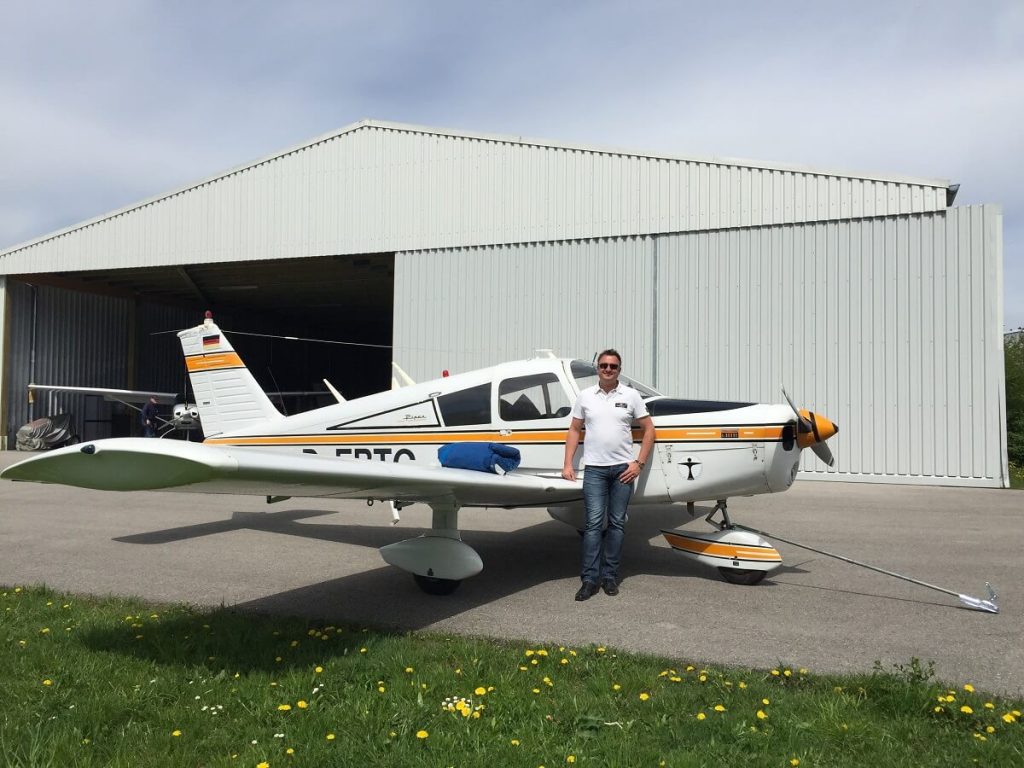
Sebastian Ruffer picking up his Cherokee 140. 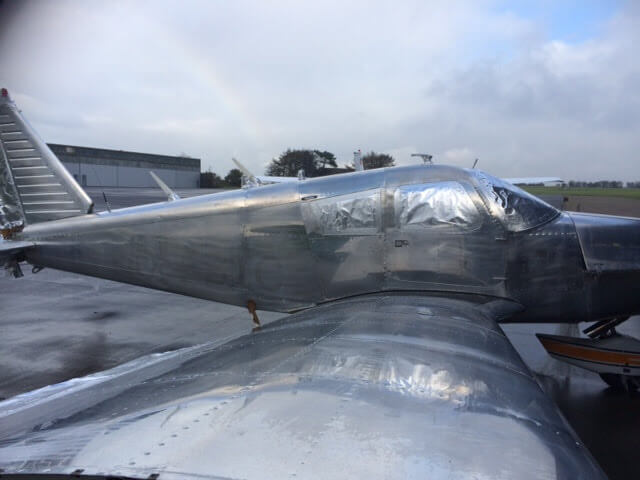
D-EBTC stripped down to bare metal. 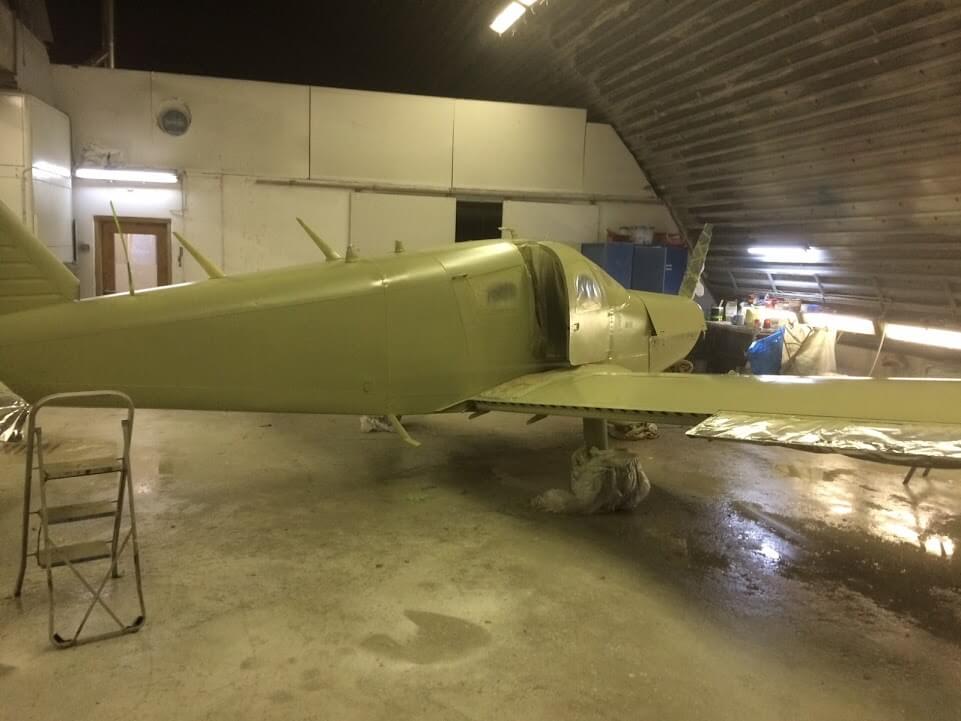
Sebastian’s 140 halfway through it’s new paint job. 
The new engine ready to be installed. 
The classic Cherokee 140B logo on Sebastian’s plane. 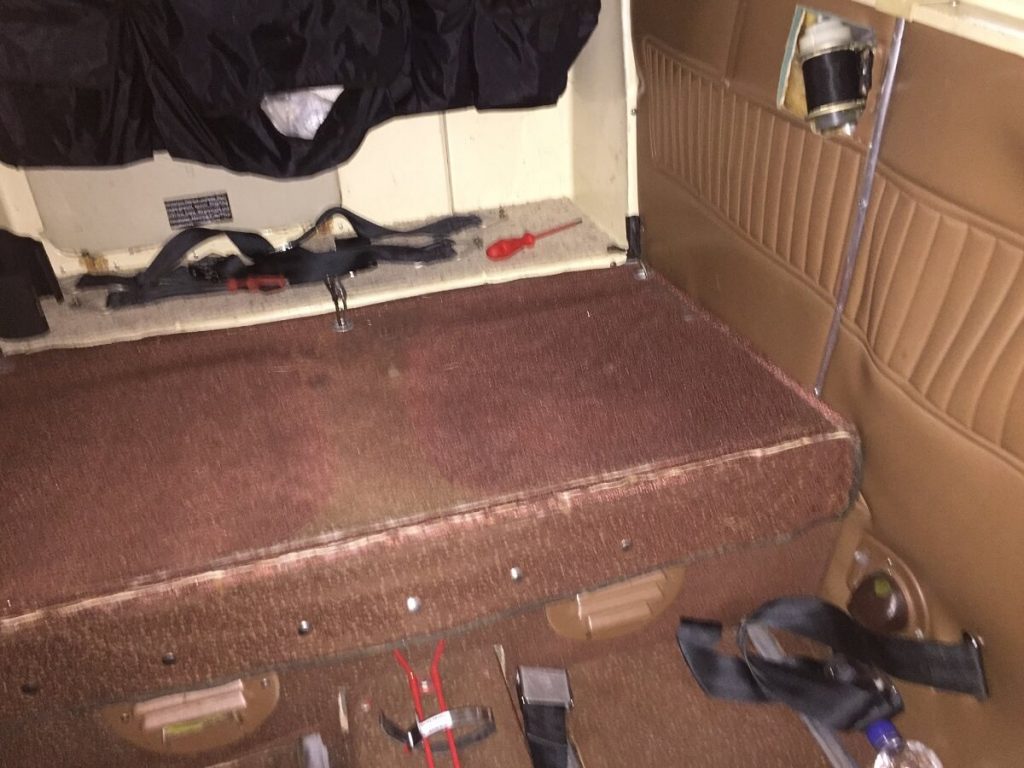
The old carpet was showing its age and had to go. 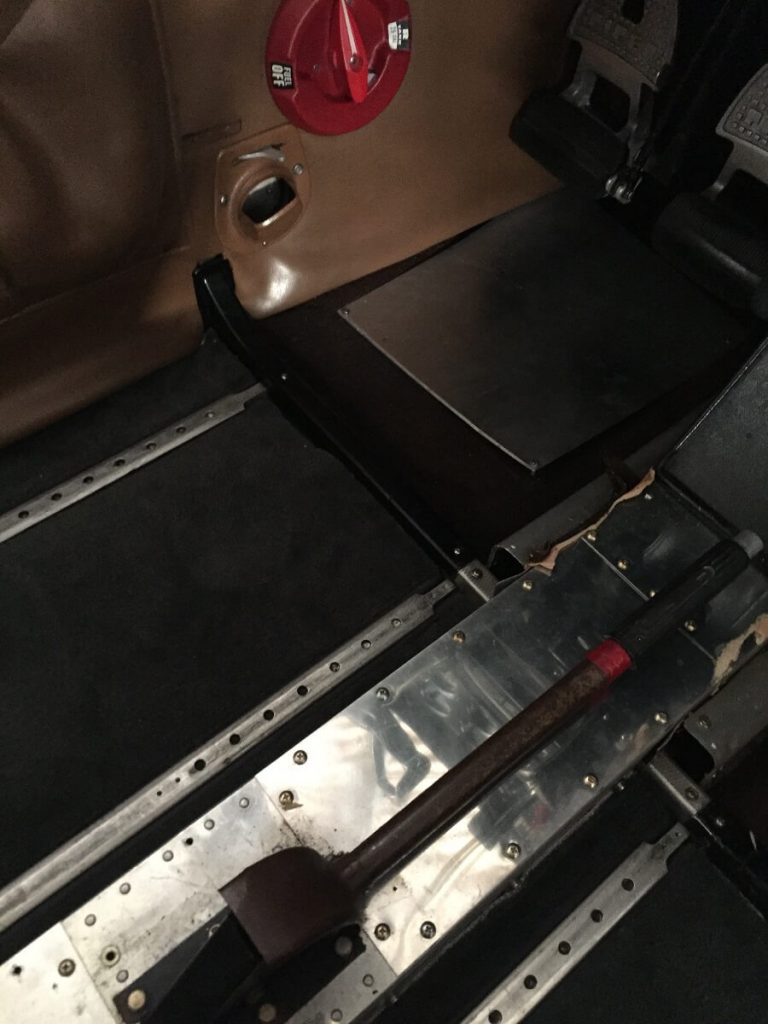
The new, dark gray carpet. 
The old VFR panel, which worked but needed updating. 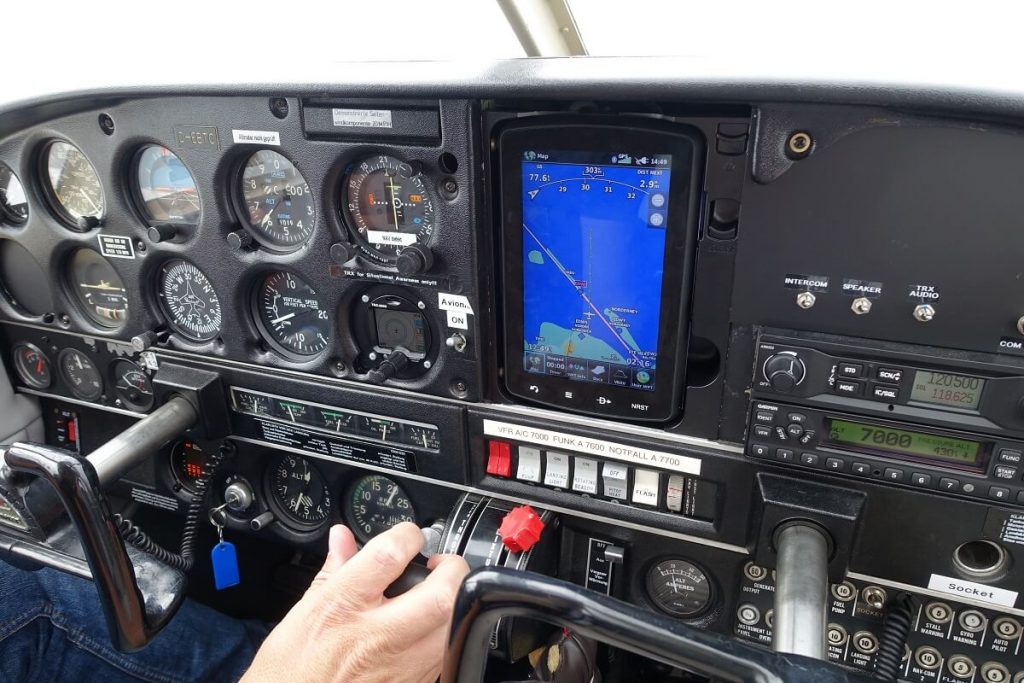
The modern VFR panel.

